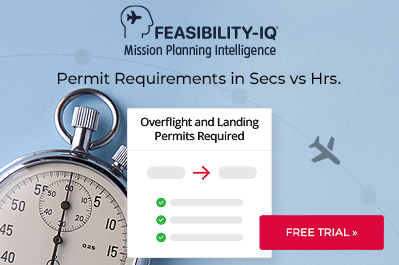CPDLC Requirements Changing in Late 2017

Controller Pilot Data Link Communications (CPDLC) are currently required in Datalink Mandated (DLM) airspace within the North Atlantic Tracks (NATs). As of Dec 7, 2017, airspace impacted by CPDLC requirements will expand and this will affect general aviation (GA) transatlantic operations.
The following is an overview of what you need to know:
1. CPDLC requirements
CPDLC currently affects NATs between flight level (FL) 350-390 as published in daily track messages. On Dec 7, 2017, the DLM airspace will expand to include the entire ICAO NAT High Level Airspace (HLA) region from FL 350 to FL 390, inclusive except for those areas as noted below:
- ATS surveillance airspace is defined as airspace where surveillance is provided by radar and/or ADS-B, as depicted in State Aeronautical Information Publications (AIPs), for aircraft that are suitably equipped (transponder/ADS-B Extended Squitter (ES) transmitter).Gander/Reykjavik Surveillance Airspace are bounded by:
- Northern boundary: 64N000W – 68N010W – 69N020W – 68N030W – 67N040W – 69N050W – 70N060W – ADSAM.
- Southern boundary: GUNPA (61N000W) – 61N007W – 6040N010W – RATSU (61N010W) – 61N020W – 63N030W – 62N040W – 61N050W – SAVRY
- Santa Maria Surveillance Airspace can be accessed by:
- Operating from Lisboa flight information region (FIR) via entry/exit point LUTAK or South to NELSO, thence 36N020W, 35N020W or 34N020W, thence to approved routing within the Santa Maria TMA.
- Airspace North of 80 degrees North. This airspace lies outside the reliable service area of geostationary satellites.
- The New York Oceanic FIR.
- Tango Routes: T9, T16 and T213
2. Impact on operators
Those who operate in affected airspace without CPDLC will now be required to fly below the Datalink Mandate (DLM), above the DLM or in Surveillance airspace as noted.
3. Equipment requirements
To operate within CPDLC NAT airspace you’ll need to be equipped with:
- CPDLC: ICAO FPL code Item 10a including J2, J3 and/or J7
- ADS-C: ICAO FPL code Item 10b must include D1
4. Exemptions and waivers
Waivers are normally not possible to operate within CPDLC airspace on the NATs. If you’re not equipped as noted you’ll need to fly above the DLM, below the DLM or via Surveillance airspace. However, automatic exemptions apply to flights that engage in firefighting missions (FFR), hospital (HOSP), humanitarian (HUM), Medevac, search and rescue (SAR) and/or State flights.
Note that you can communicate with air traffic control (ATC) on climbs and descents through this airspace on a case-by-case basis.
5. Future CPDL implications
The final phase of CPDLC implementation on the NATs begins January 30, 2020. At this time mandated CPDLC coverage will expand to include FL 290 and above.
Conclusion
If not properly equipped as mandated, when operating within CPDLC NAT airspace, it’s important to work with your trip support provider to ensure you’re able to make the crossing without having to use unfavorable flight levels. Climbs/descents through DLM airspace can usually be worked out tactically with ATC but this is not something that should be planned on.
Questions?
If you have any questions about this article or would like flight planning assistance for your next trip, contact jasondavidson@univ-wea.com.




